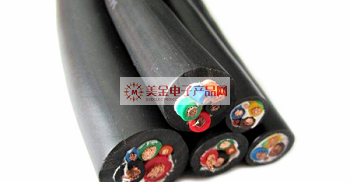Categorization:Product Information
I. How to choose heat-resistant high-temperature wire and cable?1. General wire and cable is to plastic and rubber for insulation sheath, these materials are conventional engineering materials, has a rich source to meet the mass production, and relatively low cost. But for some special industries such as petrochemical, iron and steel, aerospace, shipbuilding, military, pharmaceutical, food, plastic machinery, boilers and other heat and high-temperature related industries, need to be able to withstand a certain higher temperature wire and cable, ordinary wire and cable can not be used, need to be able to withstand high temperatures in order to ensure that the safe operation of its power and signaling wire and cable. 2. With the rapid development of China's economy, the demand for high-temperature cables in the special industry has shown a high rate of growth step off, heat-resistant and high-temperature cables at a rate of 20% per annum, high-temperature cables as an important part of the special cables, has a strong vitality, demand exceeds supply, China imports about two billion dollars a year from abroad for domestic construction. International Electrotechnical Commission (IEC) on the insulation of heat-resistant grade is generally divided into: heat-resistant grade YAEBFHC very high permissible operating temperature / ℃ 90105120130155180 ≥ 180 We commonly used wire and cable insulation and sheath for the ordinary engineering rubber and plastic for the basic resin, but the requirements are insulation grade. 3. common cable with rubber materials are: butyl rubber, Ethylene propylene rubber, natural rubber and chlorosulfonated polyethylene, etc., the operating temperature of (60 ~ 75) ℃; common cable with plastic materials such as PVC, polyethylene (including cross-linked polyethylene) and polypropylene, etc., the operating temperature of (70 ~ 90) ℃. It can be seen that these cables are not heat-resistant or high-temperature cables in the strict sense. 4, heat-resistant cables generally refer to cables at (90 to 155) °C and below, while high-temperature cables are those at 180 °C and above. Instead, the solution to the condition of ordinary cables that are not heat-resistant is to improve the materials or to use insulation-grade materials that are capable of resisting high temperatures.

-Second, on the U.S. dollars electronic products network platform related to the introduction and sales of products brief: U.S. dollars electronic products network - professional agent / production / sales of a variety of {connectors | wiring harness | wire and cable products }; if you have a related [connectors | wiring harness | wire and cable products] purchasing / sourcing needs or would like to buy / to understand which connectors | wiring harness | wire and cable products we can provide solutions, please contact the following Division Division I business personnel; If you have related [connectors | wire harness | wire and cable products] sales / resources and promotion needs, please click on the "¡¡ Business Cooperation ←" with the person to discuss!